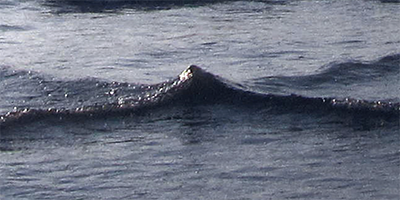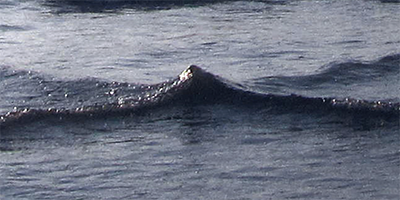Alphabet Waves
While many beachcombers head home with nothing but a few seashells and a sunburn, two scientists have made productive use of their time in the waves. At two beaches on the Pacific coast of California and Mexico, they discovered that nonlinear wave patterns, in particular X- and Y-shaped waves, are surprisingly common. As reported in Physical Review E by Mark Ablowitz and Douglas Baldwin of the University of Colorado, Boulder, these wave phenomena may contribute to the growth of tsunami waves.
Water waves are difficult to model mathematically, since the underlying equations are strongly nonlinear. Under certain conditions, these nonlinear effects can produce solitary waves called solitons that travel long distances without losing their shape. Most solitons propagate along a single-line wave front, but if two waves merge at an angle, complicated two-dimensional patterns can form. These nonlinear interactions can create wave heights that are higher than the sum of the individual waves, which may amplify the destructive power of tsunamis.
Previously, the assumption was that these interactions are rare. However, the authors have observed thousands of X and Y waves shortly before and after low tide at two flat beaches, where water depths were less than about centimeters. The researchers showed that the shallow waves recorded in their photographs and films (see examples of the authors’ videos and photos) could be accurately described by a two-dimensional nonlinear wave equation. – Michael Schirber





